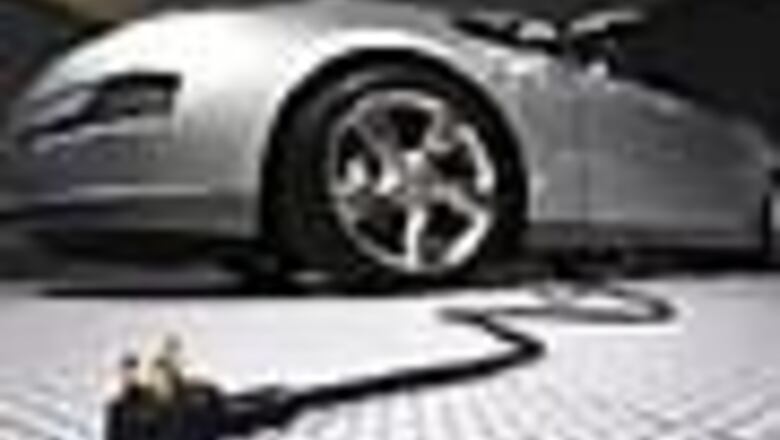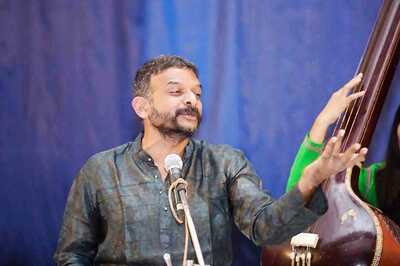
views
Paper I
Theory of Machines
Kinematic and dynamic analysis of planar mechanisms.
Cams, Gears and gear trains, Flywheels, Governors, Balancing of rigid rotors, Balancing of single and multi-cylinder engines, Linear vibration analysis of mechanical systems (single degree and two degrees of freedom), Critical speeds and whirling of shafts, Automatic Controls, Belts and chain drives. Hydrodynamic bearings.
Mechanics of Solids
Stress and strain in two dimensions. Principal stresses and strains, Mohr’s construction, linear elastic materials, isotropy and an isotropy, Stress-strain relations, uniaxial loading, thermal stresses.
Beams: Banding moment and shear force diagrams, bending stresses and deflection of beams, Shear stress distribution. Torsion of shafts, helical springs.
Combined stresses, thick and thin walled pressure vessels. Struts and columns, Strain energy concepts and theories of failure. Rotating discs. Shrink fits.
Engineering Materials
Basic concepts on structure of solids, Crystalline materials, Defects in crystalline materials, Alloys and binary phase diagrams, structure and properties of common engineering materials.
Heat treatment of steels. Plastics, Ceramics and composite Materials, common applications of various materials.
Manufacturing Science
Marchant’s force analysis, Taylor’s tool life equation, machinability and machining economics, Rigid, small and flexible automation, NC, CNC. Recent machining methods- EDM, ECM and ultrasonics.
Application of lasers and plasmas, analysis of forming processes. High energy rate forming. Jigs, fixtures, tools and gauges, Inspection of length, position, profile and surface finish.
Manufacturing management
Production Planning and Control, Forecasting-Moving average, exponential smoothing, Operations scheduling; assembly line balancing. Product development. Breakeven analysis, Capacity planning. PERT and CPM.
Control Operations: Inventory control-ABC analysis. EOQ model. Materials requirement planning. Job design, Job standards, work measurement, Quality management-Quality control. Operations Research : Linear programming-Graphical and Simplex methods. Transportation and assignment models. Single server queuing model.
Value Engineering: Value analysis, for cost/value. Total quality management and forecasting techniques. Project management.
Elements of Computation
Computer Organisation, Flow charting.
Features of Common Computer Languages-FORTRAN d Base III, Lotus 1-2-3 C and elementary programming.
Paper II
Thermodynamics
Basic concept. Open and closed systems, Applications of Thermodynamic Laws, Gas equations, Clapeyron equation, Availability, Irreversibility and Tds relations.
I.C. Engines, Fuels and Combustion:
Spark ignition and compression ignition engines, four stroke engine and two stroke engines, mechanical, thermal and volumetric efficiency, Heat balance.
Combustion process in S.I. and C.I. engines, preignition detonation in S.I. engine Diesel knock in C.I. engine. Choice of engine fuels, Octane and Cetane ratings. Alternate fuels Carburration and Fuel injection, Engine emissions and control. Solid, liquid and gaseous fuels, stoichometric air requirements and excess air factor, fuel gas analysis, higher and lower calorific values and their measurements.
Heat Transfer, Refrigeration and Air Conditioning
One and two dimensional heat conduction. Heat transfer from extended surfaces, heat transfer by forced and free convection. Heat exchangers. Fundamentals for diffusive and connective mass transfer, Radiation laws, heat exchange between black and non black surfaces, Network Analysis. Heat pump refrigeration cycles and systems, Condensers, evaporators and expansion devices and controls.
Properties and choice of refrigerant, Refrigeration Systems and components, psychometrics, comfort indices, cooling loading calculations, solar refrigeration.
Turbo-Machines and Power Plants
Continuity, momentum and Energy Equations. Adiabatic and Isentropic flow, fanon lines, Raylegh lines.
Theory and design of axial flow turbines and compressors, Flow through turbo-machine blade, cascades, centrifugal compressor. Dimensional analysis and modeling.
Selection of site for steam, hydro, nuclear and stand-by power plants, Selection base and peak load power plants, Modern High pressure, High duty boilers, Draft and dust removal equipment, Fuel and cooling water systems, heat balance, station and plant heat rates, operation and maintenance of various power plants, preventive maintenance, economics of power generation.



















Comments
0 comment